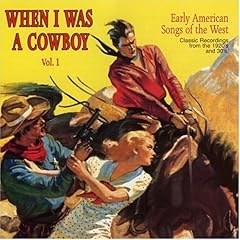
(The Otis Brother’s first album cover, artwork by R. Crumb)
Todays show features a selection of the original recordings which influenced Queens, NY based blues/pre-blues string band, The Otis Brothers. These guys have listened to a lot of music! An hours worth of their influences provide a listening pleasure and real education in early blues and stringband music captured on commercial 78 rpm records and field recordings. The picture of early blues music painted by a sampling the Otis Brothers influences is a remarkable one. There was so much more to play than there was time for on this one program, but hopefully this is a good sample. Be sure to check out the previous episode of Down Home Radio; an interview with the Otis Brothers.
Also, click the 2nd play button above to hear a mini episode featuring Pat Conte’s commentary on “The Lonely Cowboy,” the only song recorded by cowboy singer and musical singularity Arthur Miles, back in 1927. He sings, yodels, and then something else. Is it throat singing or humming and whistling?!? Hear what Pat Conte has to say, then you decide!


See below for a track listing from todays program as well as a list of recommendations on more music to listen to:
Links:
Otis Brothers Illustrated Discography
Secret Museum of the Air – Online archives of Pat Conte’s old radio show on WFMU w/ Citizen Kafka. Incredible stuff, every show is awesome.
Secret Museum of Mankind – CD series edited by Pat Conte. My favorite CD series!
Secret Museum of Mankind – The book Pat Conte got the name from. Its all online!
Before the Blues Vol. 1-3 – If you like the stuff I played on the show today, you must get copies of this awesome CD series on Yazoo Records. It runs a close second to Pat’s series.
Check out this video: http://www.youtube.com/watch?v=n9kE45lADOI This guy does a damn good version of Arthur Miles’ Lonely Cowboy. The throat singing doesn’t sound quite the same as whatever Miles is doing, but the guy in this video is a good throat singer. Is Miles really throat singing?
Tracks played on today’s episode:
1. 44 Blues – Butch Cage & Willie B. Thomas, Country Negro Jam Session
2. Baby Please Don´t Go – Butch Cage & Willie B. Thomas, Country Negro Jam Session
3. The Blood-Stained Banders – Jimmie Strothers, Afro-American Spirituals, Work Songs, And Ballads
4. Do Lord Remember Me – Jimmie Strothers & Joe Lee, Field Recordings : Vol. 1-Virginia
5. Cripple Creek – Jimmie Strothers, Black Appalachia
6. Corn-Shucking Time – Jimmie Strothers, Deep River of Song: Virginia & The Piedmont
7. Run Down Eli – Jimmie Strothers & Joe Lee, Field Recordings : Vol. 1-Virginia
8. Some of These Days – The Otis Brothers, Live at Banjo Jim’s June 9th 2007 (on DownHomeRadioShow.com)
9. Joe Turner Blues – Muddy Waters, Can’t Be Satisfied
10. Some These Days – Charley Patton, The Definitive Charley Patton (Disc Two)
11. Farrell Blues – The Otis Brothers, Let’s Go To Hunting, The Return Of The Otis Brothers
12. Farrell Blues – Charley Patton, The Definitive Charley Patton (Disc Three)
13. Come On, Boys, And Let’s Go Hunting – The Otis Brothers, Let’s Go To Hunting, The Return Of The Otis Brothers
14. Come On Boys And Let’s Go To Hunting – Henry Truvillion, Deep River of Song: Black Texicans, Balladeers & Songsters of the Texas Frontier
15. Umakotshaha- John Bhengu, Secret Museum Of Mankind Vol. 2
16. I’m Gonna Live So God Can Use Me – Blind Benny Paris & Wife, DOCD 5101
17. Relax Your Mind – Leadbelly, Leadbelly’s Last Sessions (Disc 2)
18. What Are They Doing In Heaven Today? – Washington Phillips,
19. Canned Heat Blues – Tommy Johnson,
20. Sow Good Seeds – Lil McClintock, Goodbye, Babylon (Disc 1)
21. Texas Tony – Yank Rachell, Yank Rachell’s Tennessee Jug-Busters
22. God Don’t Never Change – Blind Willie Johnson, The Guitar Evangelists: CD C
23. Cairo Blues – Henry Spaulding,
24. Down On Me – Eddie Head And His Family, American Primitive Vol. I: Raw Pre-War Gospel

More information on throat singing from the archives at:

|
||||||||||||||||||||||||||||||||||||||||||||||||||||||||||||||||||||||||||||||







That’s fantastic. It’s hard to believe that there’s still bits and pieces of information on Miles. Thank goodness it’s out there. Great show. Keep up the good work!
Fantastic stuff. It’s so great to hear people talking about Arthur Miles. I’ll definitely be listening to your show from now on. Thanks.
hey hey hey i love the otis brothers!!!!
Defintily Sygyt, I am self learning khoomei myself and I know that sound anywhere. 🙂
Sorry to disagree with Mr. Conte, but Arthur Miles was overtone singing but not what is referred to as throat-singing. Unlike sygyt, he doesn’t use the laryngeal techniques that the central Asian singers use. While Miles sang his overtones quite nicely, he was hardly a “throat-singing master.”
Still a wonderful example of the genre, and the earliest known recording of overtone singing, predating the earliest known recordings from Tuva or Mongolia.
You can hear much more at my website: http://khoomei.com and at http://youtube.com/throatsinger
Steve Sklar